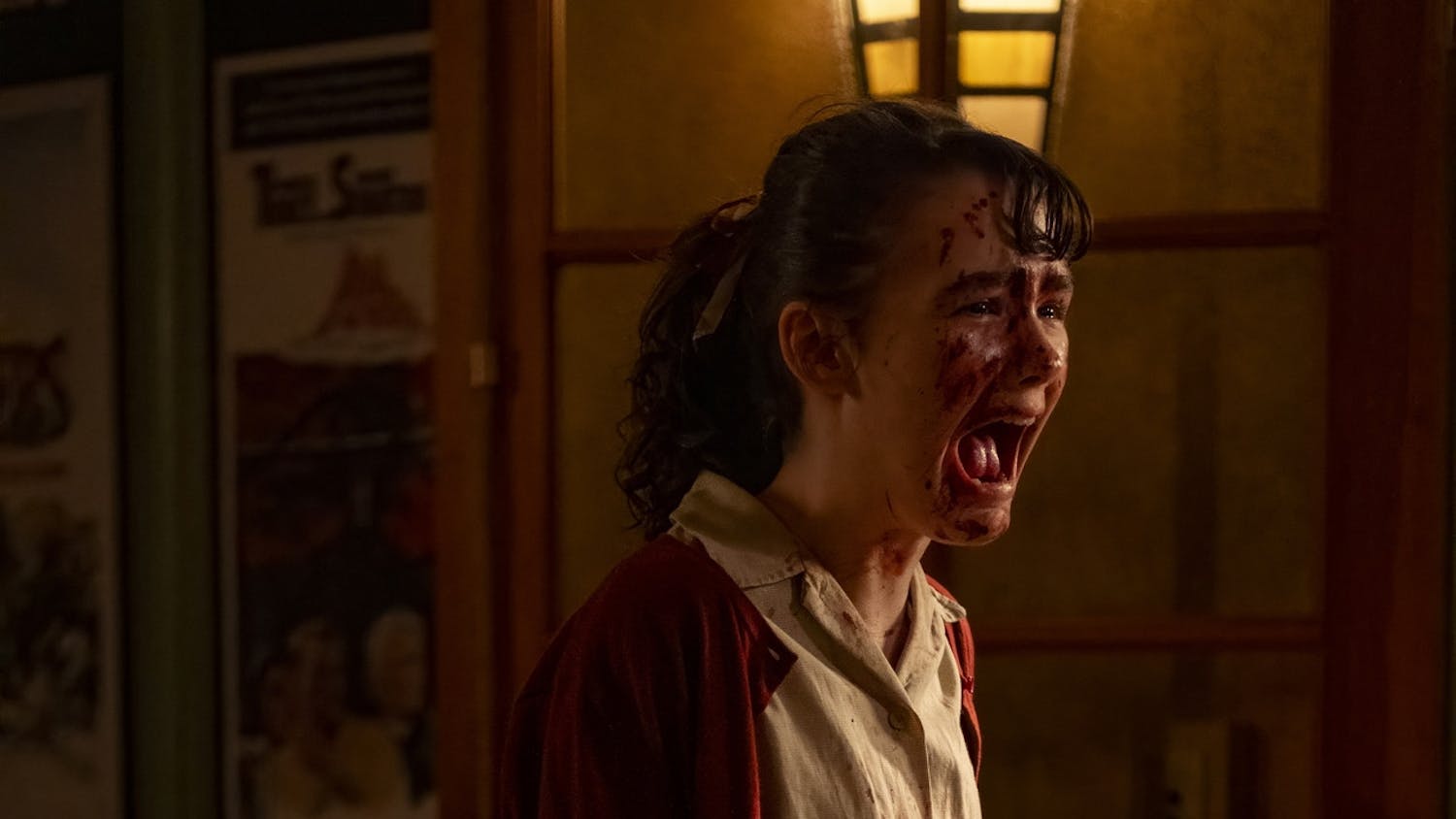Lamb is a horror-fantasy about Maria (Noomi Rapace) and Ingvar (Hilmir Snær Guônason), a young couple who run a farm in a rural Icelandic valley. Within the first twenty minutes, it’s obvious that their existence is a bleak one, revolving around their work and the occasional small talk.
However, their mundane life comes to a screeching halt when a half-lamb, half-human hybrid is born from one of their sheep. Elated, and obviously trying to fill the void of a previous loss, the couple take the creature in and raise it as their own, naming her Ada. The rest of the film follows the family’s issues both in their domestic life with Ingvar’s brother, Pétur (Björn Hlynur Haraldsson), and with the ever-unrelenting natural world trying to take back their adopted daughter.
There’s a lot to unpack with this movie. One being the storyline itself. It’s bizarre. It’s strange. But, it’s original. There aren’t any other well known movies like it, which definitely sets it apart from other movies in the same vein. It grapples with things like grief and the natural world, while hooking viewers in with the promise of seeing a new take on a demon child in film. While you can definitely tell it’s an A24 horror movie, focusing less on visual horror and more on creating feelings of uneasiness much like their movies Midsommar and The Blackcoat’s Daughter, its odd concept makes it feel extremely unique.
And it creates these uneasy feelings quite well. You’ll notice that there’s a complete absence of a soundtrack throughout most of the movie, save for a few scenes with background ambience or a song on the radio. The vast majority of the scenes simply have background noise from the bleating sheep or the wind blowing through the valley that the couple lives in. Furthermore, the fact that the characters speak more through their actions than through their limited dialogue leaves a sense of uneasiness, since they rarely directly state what they’re doing or what they’re thinking.
Another good thing about this movie is the setting and overall aesthetic. They’re great for two reasons. The first of these is that it’s gorgeous. It’s all set in a valley in the Icelandic mountains, and much of the scenery is breathtakingly beautiful, giving you something nice to look at while your anxiety builds. Furthermore, the aesthetics of the couple’s farmhouse trick you into feeling more comfortable through cozy and homey setpieces.
The second reason is that the setting directly conveys the mood of the movie overall. The outside world is cold, grey and bleak. Even in the happier moments outside, it’s all seen through a cold, blue filter, conveying the unabashed brutality of nature. For example, there’s a scene where Maria makes Ada a flower crown in a field outside. While the flowers are bright and the sun is out, it’s filtered through a cold lens. The inside of the house is warmer and cozier, conveying the comfortable domesticity the family lives in as compared to their farm and the mountains surrounding them. The juxtaposition of the outdoors and the farmhouse shows how Maria and Ingvar are hiding Ada from the harsh natural world she belongs to.
However, the best part of the film is arguably the way the actors portray the characters, particularly seen in Rapace. While Haraldsson and Guônason do absolutely fantastic jobs at portraying dysfunctional brothers, it’s Rapace who shines the most. Throughout the whole movie, you’re not just watching Maria do things, it feels like you’re feeling what she’s feeling. The absolute emptiness of the first twenty minutes, the confused elation of Ada’s birth, and the sheer heartbreak she experiences in the final few minutes. She truly carries the story along, portraying a grieving woman with a chance at happiness that comes in the form of a half-human, half-lamb.
The twist ending, however, was dissatisfying. After a movie spent musing about parenthood and the harshness of the natural world, it feels like a slap to the face. There was very little lead up to it, save for one or two extremely subtle clues, which overall makes it feel messy. While you can see how it would fit into the greater narrative after watching the film, it ultimately feels like they needed a way to finish the story fast, which ended up feeling more like a cop-out than a fitting conclusion.
Overall, Lamb is an eccentric, outlandish film, but not necessarily in a bad way. It’s a quirky take on the horror and dark fairytale genres that fully embeds itself into the minds of those who watch it.






